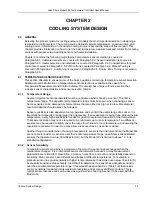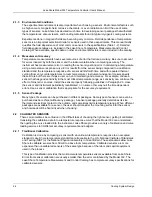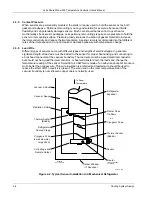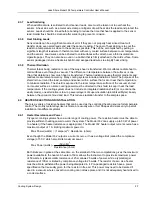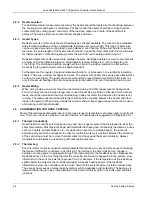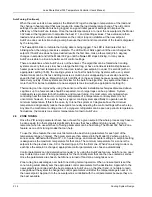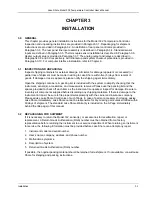
Lake Shore Model 332 Temperature Controller User’s Manual
Traditional Calibration (Continued)
Calibrated sensors include the measured test data printed and plotted, the coefficients of a
Chebychev polynomial that has been fitted to the data, and two tables of data points to be used as
interpolation tables. Both interpolation tables are optimized to allow accurate temperature conversion.
The smaller table, called a breakpoint interpolation table, is sized to fit into instruments like the Model
332 where it is called a temperature response curve. Getting a curve into a Model 332 may require a
CalCurve™ described below or hand entering through the instrument front panel.
It is important to look at instrument specifications before ordering calibrated sensors. A calibrated
sensor is required when a sensor does not follow a standard curve
if
the user wishes to display in
temperature. Otherwise, the Model 332 will operate in sensor units like ohms or volts. The Model 332
may not work over the full temperature range of some sensors. The standard inputs in are limited to
operation above 1 K even with sensors that can be calibrated to 50 mK.
2.2.2 SoftCal™
SoftCal is a good solution for applications that do not require the accuracy of a traditional calibration.
The SoftCal algorithm uses the well-behaved nature of sensors that follow a standard curve to
improve the accuracy of individual sensors. A few known temperature points are required to perform
SoftCal.
Lake Shore sells SoftCal calibrated sensors that include both the large interpolation table and the
smaller breakpoint interpolation table. A CalCurve may be required to get the breakpoint table into a
Model 332 where it is called a temperature response curve. Refer to Paragraph 2.2.4.
The Model 332 can also perform a SoftCal calibration. The user must provide one, two, or three
known temperature reference points. The range and accuracy of the calibration is based on these
points. Refer to Paragraph 5.3.
2.2.3 Standard
Curves
Some types of sensors behave in a very predictable manner and a standard temperature response
curve can be created for them. Standard curves are a convenient and inexpensive way to get
reasonable temperature accuracy. Sensors that have a standard curve are often used when
interchangeability is important. Some individual sensors are selected for their ability to match a
published standard curve and sold at a premium, but in general, these sensors do not provide the
accuracy of a calibrated sensor. For convenience, the Model 332 has several standard curves
included in firmware.
2.2.4 CalCurve™
The CalCurve service provides the user with a convenient way get the temperature response curve
from Lake Shore calibrated sensors into instruments like the Model 332. It can be performed at the
factory when calibrated sensors and instruments are ordered together. The factory installed CalCurve
option is Model 8001-332 and should be ordered with the calibrated sensor. A CalCurve can be done
in the field when additional or replacement sensors are installed. Curve data is loaded into some type
of non-volatile memory that is installed into the instrument by the user. In the case of the Model 332,
the curve is loaded into a non-volatile memory that can be installed into the instrument. The field-
installed version is a Model 8002-05-332 and should be ordered with the calibrated sensor.
Customers that have a PC-compatible computer with an RS-232C or IEEE-488 interface have
another option. The Model 8000 is included with the calibrated sensor and can be loaded by the user.
Cooling System Design
2-3













